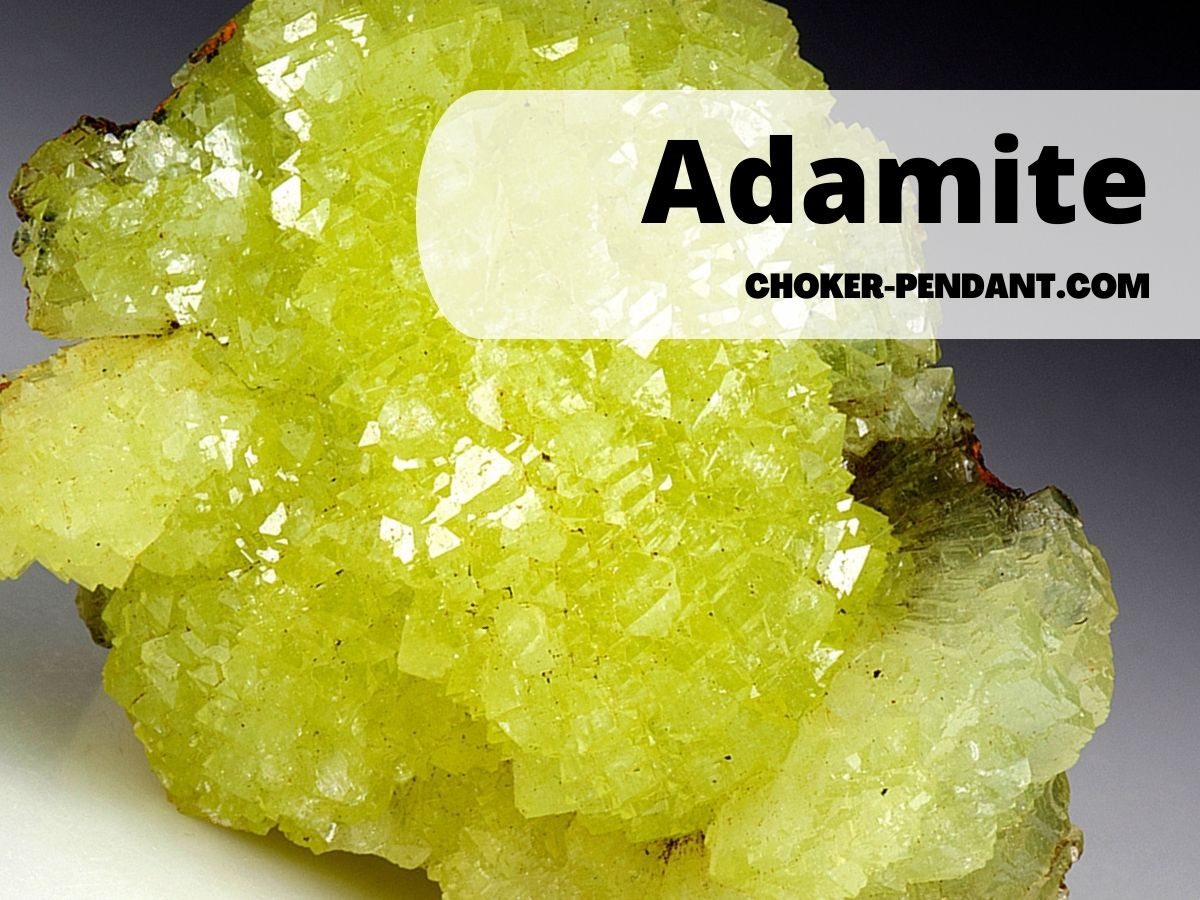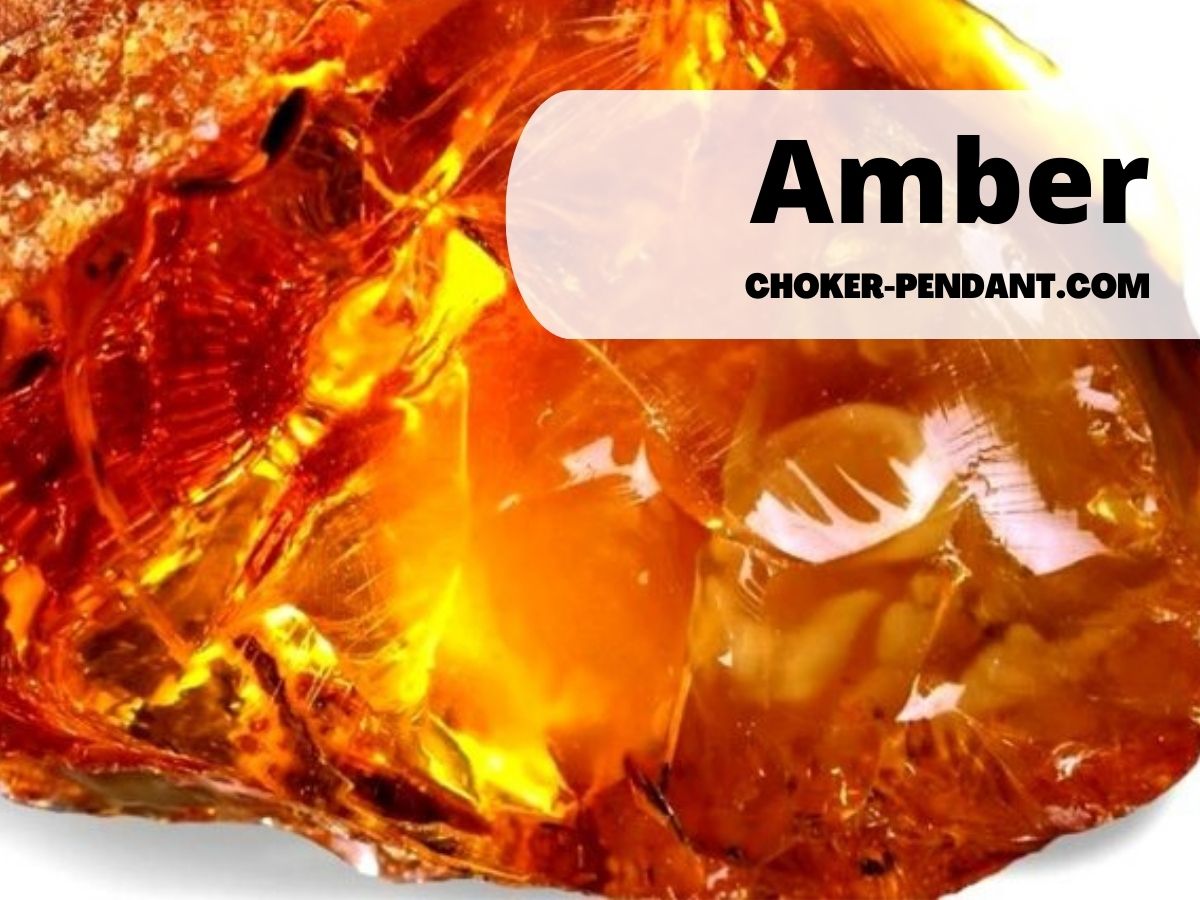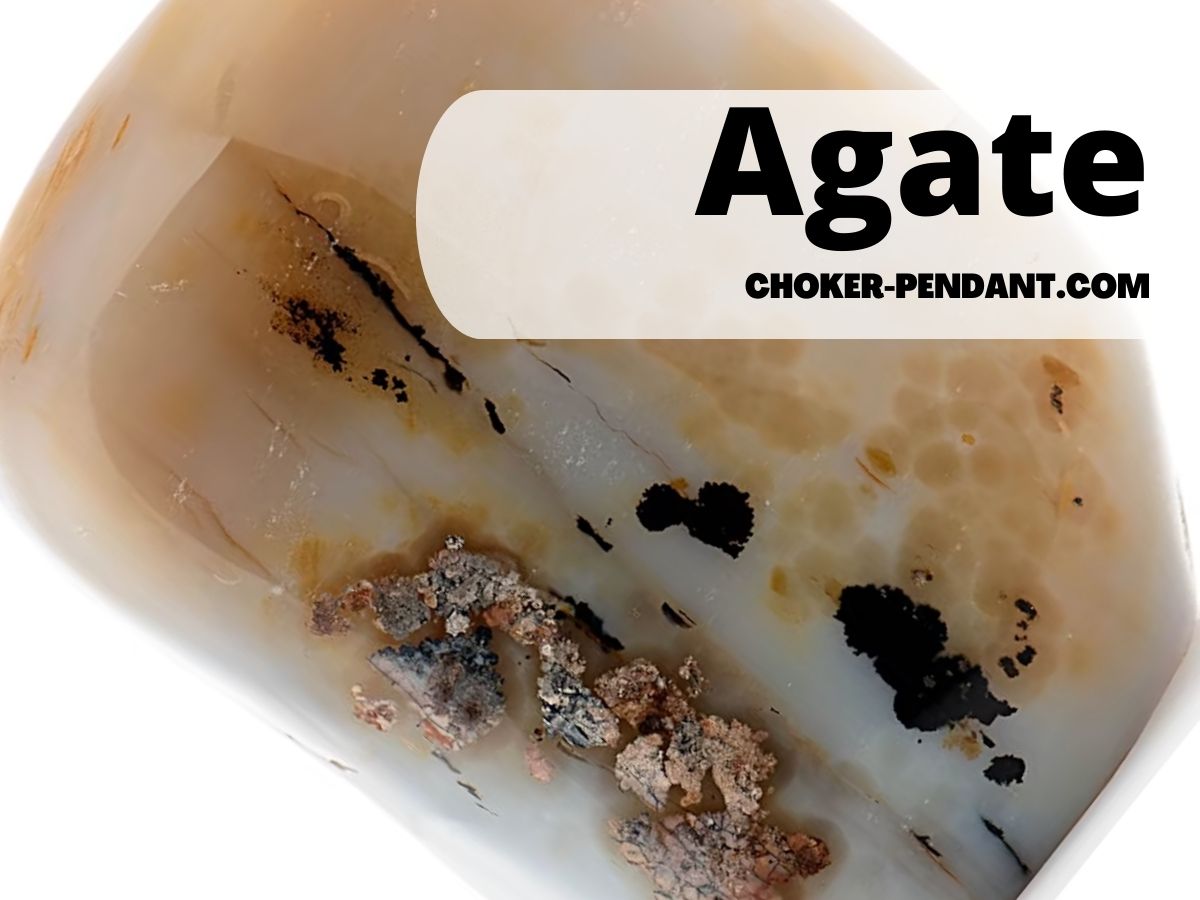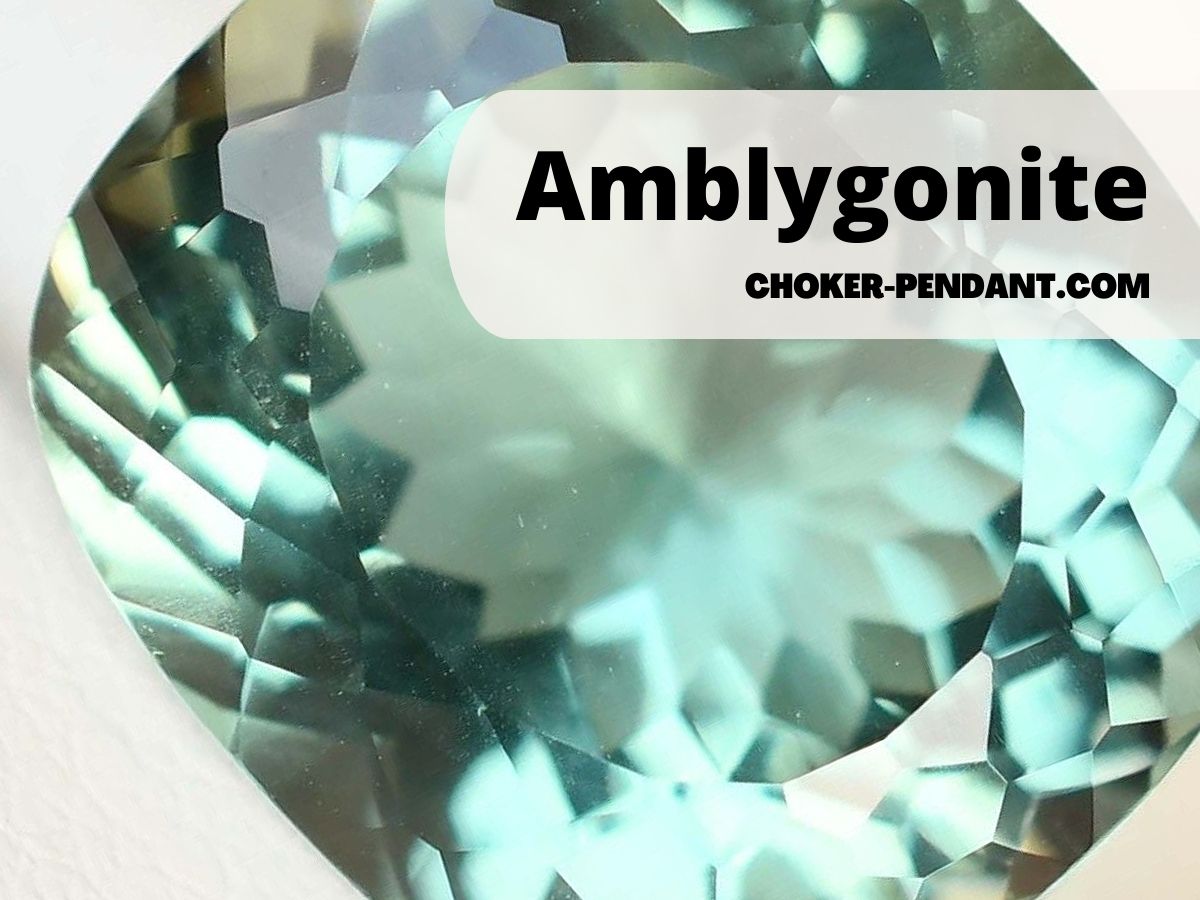What is Adamite?
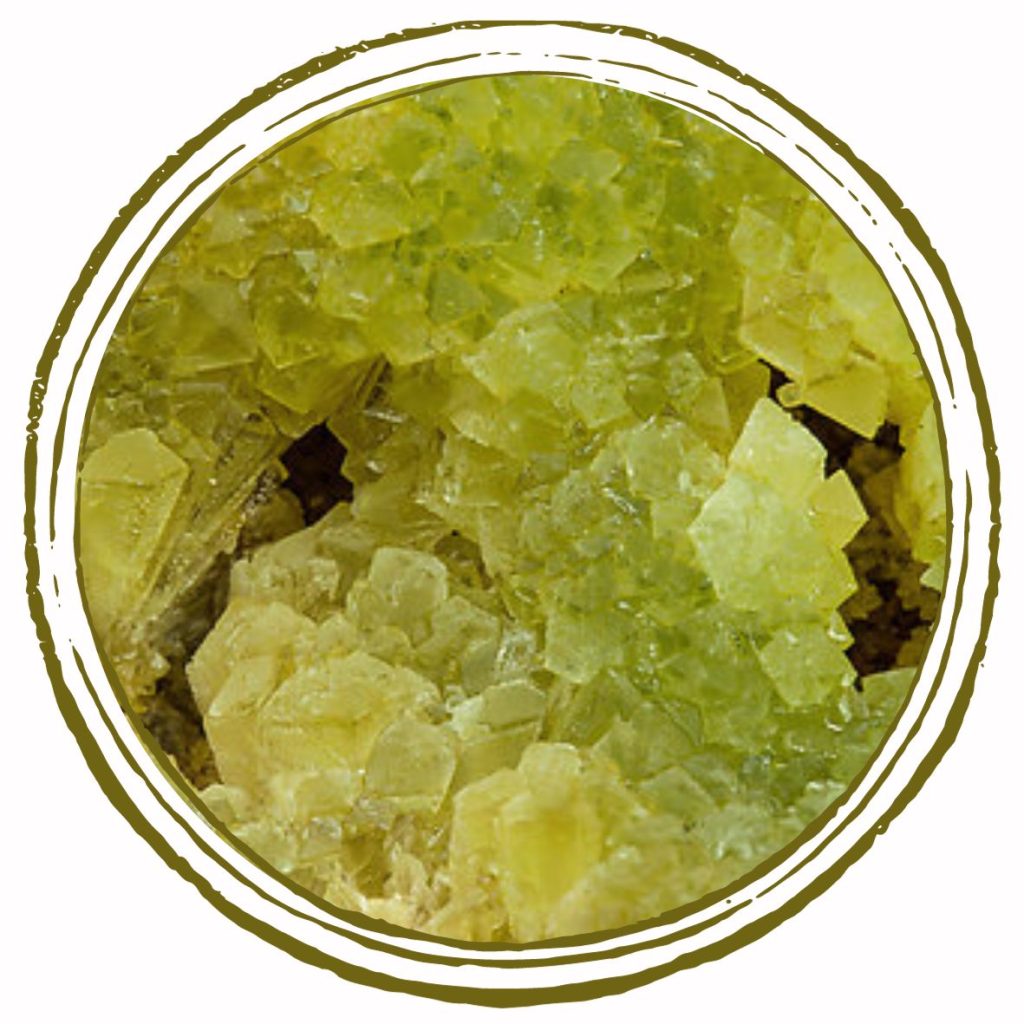
Adamite, a rare and beautiful arsenate mineral, is primarily composed of zinc arsenate (Zn₂(AsO₄)(OH)). It may contain trace amounts of elements like copper, cobalt, or manganese, contributing to its vibrant colors of yellow, green, and blue, along with high transparency and vitreous luster. Forming in oxidized ore deposits altered by hydrothermal activity, adamite is often found alongside minerals like lead, zinc, and arsenic. Notable locations include Mapimi, Durango, Mexico, and Tsumeb Mine, Namibia.
Adamite Specifications & Characteristics
| Origin of the name: | The name “adamite” comes from the Greek word “adamas,” meaning invincible or indomitable, due to its remarkable resilience. |
| Group of belonging: | Adamite belongs to the arsenate group of minerals. |
| Chemical composition: | Adamite is composed primarily of zinc arsenate (Zn2(AsO4)(OH)). It can also contain trace amounts of other elements such as copper, cobalt, or manganese. |
| Hardness: | 3.5 to 4 on the Mohs scale |
| Crystal system: | Orthorhombic |
| Deposit(s): | Mapimi, Durango, Mexico and Tsumeb Mine, Namibia |
| Cleavage: | Imperfect cleavage parallel to {010} |
| Color(s): | Typically green, but can also be found in yellow or blue |
| Transparency: | Transparent to translucent |
| Luster: | Vitreous to pearly |
| Geological occurrence: | Oxidized ore deposits that undergo alteration due to hydrothermal activity |
Is Adamite a Suitable Gemstone for Jewelry?
Adamite is a relatively soft mineral with a hardness of 3.5 to 4 on the Mohs scale. This makes it less than ideal for jewelry use, as it can be easily scratched or chipped. Additionally, adamite has imperfect cleavage, which means that it can break along certain planes more readily than others. This can make it difficult to cut and shape into intricate jewelry designs.
However, despite its softness and cleavage, adamite is still prized by some jewelers for its unique beauty and rarity. It is often used in cabochons or pendants, where it is less likely to be damaged. Adamite can also be used in jewelry with protective settings, such as bezels.
Overall, adamite is a beautiful and unique mineral, but it is important to be aware of its limitations before using it in jewelry. If you are considering using adamite in jewelry, it is important to choose a reputable jeweler who can create a piece that is both beautiful and durable.
Historical Significance and Cultural Importance
The historical significance of adamite dates back centuries when it was first discovered in mapimi mines located in Durango, Mexico. The indigenous people revered this stone for its purported healing properties and considered it sacred due to its association with fertility and abundance.
In modern times, adamite’s cultural importance extends beyond folklore and traditional beliefs. Its striking colors make it a favorite choice for jewelry designers who seek unique gemstones that stand out from conventional options.
Furthermore, adamite’s presence in museum collections around the world highlights its scientific value as a captivating specimen that embodies both geological and artistic splendor. Moreover, adamite has also found its place in the metaphysical realm.
Some believe that it possesses metaphysical properties, including gentle and soothing energies that aid in emotional healing and spiritual growth. Its vibrant hues are associated with the heart chakra, promoting love, compassion, and self-acceptance.
Adamite stone is a remarkable mineral that captivates with its beauty and holds immense historical significance. Whether treasured for its scientific value, admired for its artistic allure, or believed to possess mystical qualities, adamite continues to leave an indelible mark on the world of minerals.
Geological Formation of Adamite Stone
Composition and Mineralogy
Adamite is a mineral belonging to the arsenate group. It is composed primarily of zinc arsenate, with chemical formula Zn2(AsO4)(OH).
The structure of adamite consists of zinc atoms bonded to arsenic and oxygen atoms, forming a framework within which hydroxyl groups are incorporated. This unique composition gives adamite its distinctive physical and optical properties.
In addition to the primary constituents, adamite can contain trace amounts of other elements such as copper, cobalt, or manganese, which may substitute for zinc in the crystal lattice. These impurities contribute to variations in color and overall appearance among different specimens of adamite.
Formation Process and Geological Occurrence
Adamite typically forms in oxidized ore deposits that undergo alteration due to hydrothermal activity. The primary mechanism for adamite formation involves the interaction between oxidizing fluids rich in zinc and arsenic-bearing minerals present in the host rocks. The availability of these chemical constituents along with suitable environmental conditions is crucial for adamite crystal growth.
Geologically, adamite is associated with areas where base metal deposits occur, such as lead-zinc veins or mineralized zones within volcanic rocks. It often forms as secondary mineralization through processes like oxidation or supergene enrichment where preexisting sulfide minerals are weathered near the surface.
Notable occurrences of adamite can be found worldwide, but some locations have gained particular recognition for their exceptional specimens. These include Mapimi in Durango, Mexico, known as the birthplace of adamite mining, and Tsumeb Mine in Namibia renowned for its world-class collection.
The geological formation process involved in creating aesthetic crystalline structures makes each piece of adamite unique. Understanding its composition and occurrence helps us appreciate this captivating mineral even further.

Physical Properties of Adamite Stone
Color Variations and Crystal Structures
Adamite stone exhibits a fascinating range of colors, making it visually captivating to mineral enthusiasts. The most common colors found in adamite are shades of yellow, green, and blue.
These hues can vary in intensity and saturation, creating a spectrum of stunning color variations. In some cases, adamite can display a mix of these colors within the same crystal or specimen, creating a mesmerizing play of tones.
In terms of crystal structures, adamite belongs to the orthorhombic system. It forms prismatic or acicular crystals with well-defined faces and sharp terminations.
The crystals often show excellent transparency and can be found as single individuals or in clusters that create intricate formations. Adamite crystals frequently occur as radial aggregates, resembling delicate flower-like structures when grouped together.
Hardness, Cleavage, and Fracture Characteristics
Adamite possesses a moderate hardness on the Mohs scale, typically ranging between 3.5 to 4. This level of hardness allows for ease in cutting and shaping into various forms for jewelry or other aesthetic purposes. However, caution should be exercised during handling as adamite is not exceptionally tough and may chip or fracture under excessive force.
Regarding cleavage properties, adamite exhibits imperfect cleavage parallel to its {010} plane due to its orthorhombic crystal structure. This means that when subjected to certain directions of stress or pressure during cutting or handling processes, the mineral may break along these planes more readily than across them.
In terms of fracture characteristics, adamite displays conchoidal fractures which result in smooth curved surfaces resembling the appearance of broken glass fragments. This distinctive fracturing pattern adds to its allure when examined closely.
Transparency and Luster
Adamite is renowned for its high transparency, allowing light to pass through the crystal creating a beautiful play of colors. Transparent adamite crystals are particularly desirable among collectors due to their exceptional clarity and ability to exhibit vibrant hues. The luster of adamite can vary depending on the type and quality of the specimen.
Most commonly, it displays a vitreous or glassy luster which enhances its visual appeal. This characteristic luster contributes to its gem-like appearance and adds a touch of elegance to any collection.
In certain cases, adamite can also exhibit a pearly or silky luster due to the presence of microscopic inclusions or surface textures. This unique variation in luster further contributes to the overall allure and individuality of each adamite specimen.
Adamite: The Crystal of Transformation and Self-Love
Adamite is a rare and beautiful crystal that is known for its powerful transformative and self-love energies. It is a stone of new beginnings, helping us to release old patterns and beliefs and embrace our true potential. Adamite is also associated with creativity, passion, and joy.
Famous Localities for Adamite Stone
Mapimi, Durango, Mexico: The Birthplace of Adamite
Nestled in the scenic region of Durango, Mexico, lies the renowned birthplace of adamite stone – Mapimi. This small town has gained international recognition for its abundant deposits of this captivating mineral. The discovery and subsequent mining activities in Mapimi have played a pivotal role in unraveling the mysteries surrounding adamite.
Discovery and Early Mining Activities in Mapimi
The exploration and serendipitous unearthing of adamite traces its roots back to the mid-19th century in Mapimi. It was during this time that intrepid miners stumbled upon vibrant green specimens with a distinct crystalline structure.
The news spread like wildfire, attracting both amateur collectors and seasoned geologists to witness this newfound treasure. The early mining activities in Mapimi were characterized by arduous manual labor as miners meticulously extracted adamite from deep underground shafts.
These dedicated prospectors braved treacherous conditions to retrieve the gem-like crystals embedded within the earth’s limestone layers. Their tireless efforts not only showcased their unwavering determination but also provided invaluable insights into the properties and distribution of adamite.
Unique Specimens Found in Mapimi Mines
What makes Mapimi truly exceptional is the unique array of specimens found within its mines. These extraordinary formations captivate enthusiasts worldwide with their diverse colors, ranging from vivid green to yellow or even blue hues.
Some specimens exhibit delicate botryoidal clusters resembling miniature grapes, while others showcase stunning crystal formations with intricate lattices. Moreover, certain rarities have been discovered exclusively within these Mexican mines.
One such rarity is “cupid’s arrow” adamites – slender crystals that exhibit remarkable transparency and terminate into sharp needle-like points resembling cupid’s iconic dart. These peculiar formations, combined with the overall abundance and quality of specimens, have solidified Mapimi’s reputation as an indispensable destination for adamite enthusiasts.
Tsumeb Mine, Namibia: World-Renowned for Exceptional Adamite Specimens
Tsumeb, a legendary mining town in Namibia, has earned its place among the world’s most revered localities for adamite stone. Renowned for its rich mining history and unparalleled specimens, Tsumeb continues to captivate collectors and researchers alike with its exceptional green adamites.
Tsumeb’s Rich Mining History
Tsumeb’s mining history traces back to the early 1900s when German colonizers recognized the region’s immense potential. The establishment of a well-organized mining operation brought forth a multitude of minerals, adamite being one of the most sought-after treasures. The Tsumeb mine became synonymous with expert craftsmanship and technological advancements in mineral extraction.
Spectacular Green Adamites from Tsumeb
The green adamites from Tsumeb possess a unique allure that sets them apart from other localities. They exhibit an intense emerald-green coloration that radiates vibrancy and depth.
These robust crystals often form intricate clusters or isolated prismatic structures that catch the light, showcasing their inherent beauty. Among the most remarkable finds in Tsumeb are adamite stalactites – impressive formations resembling suspended icicles composed entirely of sparkling green crystals.
These rare stalactitic structures have enthralled collectors worldwide due to their ethereal aesthetics and extraordinary size. Mapimi in Durango, Mexico – as the birthplace of adamite – stands as a testament to humanity’s fascination with minerals.
Similarly, Tsumeb in Namibia represents a pinnacle in mining history due to its exceptional specimens. Both localities have contributed immensely to our understanding and appreciation of adamite stone, offering a glimpse into the captivating world hidden beneath the Earth’s surface.
Varieties of Adamite Stone
Yellow-Green Zincian Adamite
Yellow-green zincian adamite is a stunning variety of adamite stone that displays a vibrant, citrus-like hue, ranging from yellow to green. What sets this variety apart is its chemical composition.
While regular adamite consists primarily of calcium and arsenate, yellow-green zincian adamite features a higher concentration of zinc. This substitution of calcium with zinc gives the mineral its distinctive coloration.
Notable occurrences of yellow-green zincian adamite can be found in several locations worldwide. One prominent source is the Ojuela Mine in Mapimí, Durango, Mexico.
The Ojuela Mine has yielded exceptional specimens showcasing the characteristic bright and saturated yellow-green color. Other noteworthy occurrences include the Tsumeb Mine in Namibia and the Lavrion District in Greece.
Blue-Green Cuprian Adamite
Cuprian adamites, also known as cuproadamites or simply cuprians, are captivating variations of adamite stone displaying captivating shades of blue and green. The unique coloration is attributed to the presence of copper within their chemical structure. The inclusion of copper ions alters the crystal lattice arrangement, resulting in these mesmerizing hues.
Finding cuprian adamites can be more challenging compared to other varieties due to their relative rarity. Nevertheless, there are a few notable locations where these gem-like specimens have been discovered.
One such place is the Tsumeb Mine in Namibia, renowned for producing world-class minerals including cuprian adamites exhibiting vivid blues and greens. Additionally, lesser-known occurrences include mines in Arizona (USA), Chile’s Atacama Desert region, and Mapimí (Mexico).
The captivating colors exhibited by both yellow-green zincian and blue-green cuprian adamites make them highly sought-after by collectors worldwide. Note: Please be aware that collecting minerals from mine sites may require permission and adherence to local regulations.
Always ensure you are acting within the law and respecting the environment. Remember to include proper safety precautions while handling minerals, such as wearing gloves and using appropriate tools when necessary.
Enjoy the beauty of these remarkable adamite varieties, but also ensure responsible collecting practices to preserve our natural treasures for future generations.
Collecting and Appreciating Adamite Stones
Popularity Among Mineral Collectors
Adamite stones have gained significant popularity among mineral collectors worldwide due to their unique aesthetic appeal and rarity. The vibrant colors, intricate crystal structures, and fascinating variations make them highly sought after by enthusiasts.
The distinctiveness of each specimen, coupled with the limited availability in the market, adds to the allure of collecting these gemstones. Mineral collectors appreciate the challenge of finding exceptional specimens and adding them to their curated collections, often considering adamite stones as prized possessions.
Characteristics that Make it Desirable to Collectors
Several characteristics make adamite stones particularly desirable among mineral collectors. Firstly, their striking color variations, ranging from vivid greens to captivating blues, captivate collectors’ attention.
Additionally, the intricate crystal formations found in adamite specimens showcase nature’s artistry at its finest. Another appealing feature is their rarity; high-quality adamite stones are not abundant in the market, making them highly valued by collectors seeking uniqueness in their collections.
Tips for Identifying Authentic Specimens
Identifying authentic adamite specimens requires a keen eye and careful examination. To differentiate genuine adamites from imitations or other minerals resembling them, several factors need consideration.
First and foremost is color; genuine adamites display vivid hues that are characteristic of this gemstone. Next is crystal structure; closely inspect the crystalline formations for distinctive shapes commonly associated with adamites.
It’s also crucial to evaluate transparency; authentic specimens exhibit varying degrees of transparency based on their composition. Consult reputable mineral experts or use reliable gemological resources for further guidance in identifying authentic adamite stones.
Caring for Your Collection
To preserve the beauty of your precious collection of adamite stones for generations to come, proper care is essential. When it comes to storage conditions, ensure that you keep your specimens in a cool, dry environment away from direct sunlight.
Exposure to excessive heat or humidity can cause damage or discoloration. Properly cushioning and securing the specimens within display cases or storage boxes is also crucial to prevent accidental breakage.
When it comes to cleaning techniques, avoid using harsh chemicals or abrasive materials that could potentially harm the delicate surface of adamite stones. Gently wiping them with a soft cloth or using mild soap and water will usually suffice for routine cleaning.
Conclusion
Adamite stones have garnered immense popularity among mineral collectors due to their intrinsic beauty and rarity. The vibrant colors and intricate crystal structures make each specimen a true work of art from nature. Collectors are drawn to the challenge of finding unique specimens and adding them to their carefully curated collections.
By following proper care guidelines, these precious stones can be preserved for future generations to appreciate and enjoy. The world of adamite stone collecting is one filled with awe-inspiring beauty, endless fascination, and the joy of connecting with Earth’s geological wonders.

